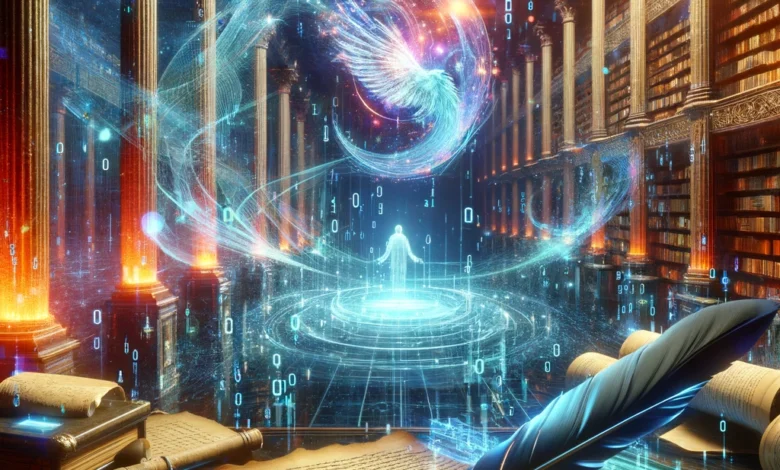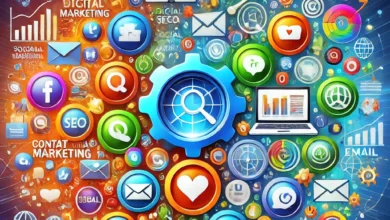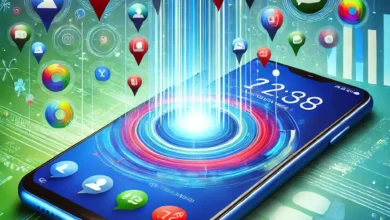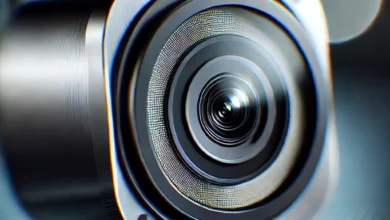Bards AI: Revolutionizing Creative Storytelling with Artificial Intelligence

Introduction: The Dawn of AI-Assisted Creativity
In the rapidly evolving world of technology, artificial intelligence (AI) has emerged as a powerful tool transforming various industries. Among its many applications, AI’s role in the creative arts stands out as one of the most intriguing. Enter Bards AI—a cutting-edge platform designed to revolutionize storytelling, poetry, and creative writing by seamlessly blending human creativity with AI’s limitless potential. In this blog, we will explore how Bards AI is reshaping the landscape of creative expression, empowering writers and artists to reach new heights of imagination.
The Evolution of Storytelling: From Oral Traditions to AI
Storytelling has been a fundamental part of human culture for millennia. From ancient oral traditions passed down through generations to the invention of the printing press and the rise of digital media, the ways in which we tell stories have continually evolved. Today, we stand at the cusp of another significant transformation: the integration of AI into the creative process.
Bards AI represents the latest advancement in this ongoing evolution. By leveraging advanced natural language processing (NLP) and machine learning algorithms, Bards AI can generate narratives, poems, and other forms of creative content that rival the work of human writers. However, Bards AI is not merely a tool for automation—it is a collaborative partner that enhances and amplifies human creativity.
How Bards AI Works: The Fusion of Human and Machine Creativity
At its core, Bards AI operates on the principle of co-creation. Unlike traditional AI tools that operate independently, Bards AI is designed to work alongside writers, providing suggestions, generating content, and helping to shape the narrative in real-time. Here’s how it works:
- Idea Generation: Bards AI can generate a wide range of ideas based on user input. Whether you’re looking for inspiration for a new story, a unique character concept, or an unusual plot twist, Bards AI offers a plethora of creative options.
- Writing Assistance: Once an idea is selected, Bards AI helps writers develop it into a full-fledged story. It can generate entire paragraphs, dialogue exchanges, or even entire chapters, all while maintaining the writer’s unique voice and style.
- Editing and Refinement: Bards AI also functions as an intelligent editor, offering suggestions for improving grammar, sentence structure, and overall readability. It can identify inconsistencies in the plot, suggest alternative word choices, and even help maintain the desired tone throughout the piece.
- Creative Expansion: One of the most exciting features of Bards AI is its ability to expand on ideas. Writers can input a basic concept, and Bards AI will explore various directions the story could take, offering multiple possibilities that the writer may not have considered.
Benefits of Using Bards AI in Creative Writing
The integration of Bards AI into the creative writing process offers numerous benefits that go beyond mere convenience. Here are some of the key advantages:
- Enhanced Creativity: Bards AI opens up new avenues for creative expression by providing writers with a wealth of ideas and possibilities. It helps overcome writer’s block and encourages experimentation with different styles and genres.
- Increased Efficiency: Writing, especially in the early stages, can be a time-consuming process. Bards AI speeds up this process by generating content quickly, allowing writers to focus on refining and perfecting their work.
- Collaborative Partner: Rather than replacing human writers, Bards AI acts as a collaborative partner, complementing their skills and providing valuable input. This partnership between human and machine leads to richer, more complex narratives.
- Accessibility: For aspiring writers who may struggle with certain aspects of writing, such as grammar or plot development, Bards AI offers a supportive tool that can help them improve their craft and gain confidence in their abilities.
Real-World Applications: How Writers Are Using Bards AI
Bards AI is already making waves in various creative fields. Let’s take a look at some real-world examples of how writers and artists are using Bards AI to push the boundaries of storytelling:
- Novel Writing: Established authors are using Bards AI to explore new genres and experiment with unconventional narrative structures. By providing a steady stream of ideas and content, Bards AI enables authors to tackle ambitious projects they might have otherwise avoided.
- Screenwriting: In the world of film and television, screenwriters are leveraging Bards AI to brainstorm new plotlines and develop dialogue that resonates with audiences. The AI’s ability to generate natural-sounding dialogue is particularly valuable in this context.
- Poetry: Poets are using Bards AI to craft verses that blend traditional poetic forms with modern themes. The AI’s capacity to understand and mimic poetic structures allows poets to explore new creative directions.
- Game Design: In the gaming industry, narrative designers are using Bards AI to create intricate storylines and immersive worlds. The AI’s ability to generate branching narratives and multiple outcomes enhances the player’s experience and adds depth to the game’s storytelling.
The Ethical Implications: Navigating the Future of AI in Creativity
As with any technological advancement, the rise of AI in creative fields raises important ethical questions. One of the primary concerns is the potential for AI to overshadow human creativity or reduce the value of human-generated content. However, proponents of Bards AI argue that the technology is designed to enhance, not replace, human creativity.
Another concern is the issue of authorship. When a piece of writing is co-created by a human and an AI, who should be credited as the author? Bards AI addresses this by ensuring that the human writer remains in control of the creative process, with the AI acting as a supportive tool rather than a co-author.
Finally, there is the question of diversity and representation. AI systems are trained on vast datasets, which may reflect biases present in the data. It’s essential that developers of AI like Bards AI take steps to mitigate these biases and ensure that the AI generates content that is inclusive and representative of diverse voices and perspectives.
The Future of Bards AI: What Lies Ahead?
The potential of Bards AI is vast, and the technology is still in its early stages. As AI continues to evolve, we can expect to see even more sophisticated and powerful tools for creative writing and storytelling. Some future developments might include:
- Personalized AI Assistants: Imagine a version of Bards AI that is specifically tailored to your writing style and preferences. This personalized AI assistant could anticipate your needs, offer suggestions based on your previous work, and even help you develop your unique voice as a writer.
- Multimedia Integration: Bards AI could expand beyond text-based content to include multimedia elements such as music, visual art, and interactive storytelling. This would open up new possibilities for creating rich, immersive experiences.
- Collaborative Platforms: As AI becomes more integrated into the creative process, we might see the rise of collaborative platforms where writers, artists, and AI systems work together in real-time to create innovative content.
Conclusion: Embracing the Power of Bards AI
The emergence of Bards AI marks a significant milestone in the evolution of storytelling. By combining the best of human creativity with the power of artificial intelligence, Bards AI is opening up new possibilities for writers and artists to explore. Whether you’re a seasoned author looking to push the boundaries of your craft or an aspiring writer seeking to overcome creative hurdles, Bards AI offers a powerful tool that can help you achieve your goals.
As we move forward into this exciting new era of AI-assisted creativity, it’s essential to embrace the opportunities presented by Bards AI while remaining mindful of the ethical implications. By doing so, we can ensure that the future of storytelling is both innovative and inclusive, with AI serving as a valuable partner in the creative process.



